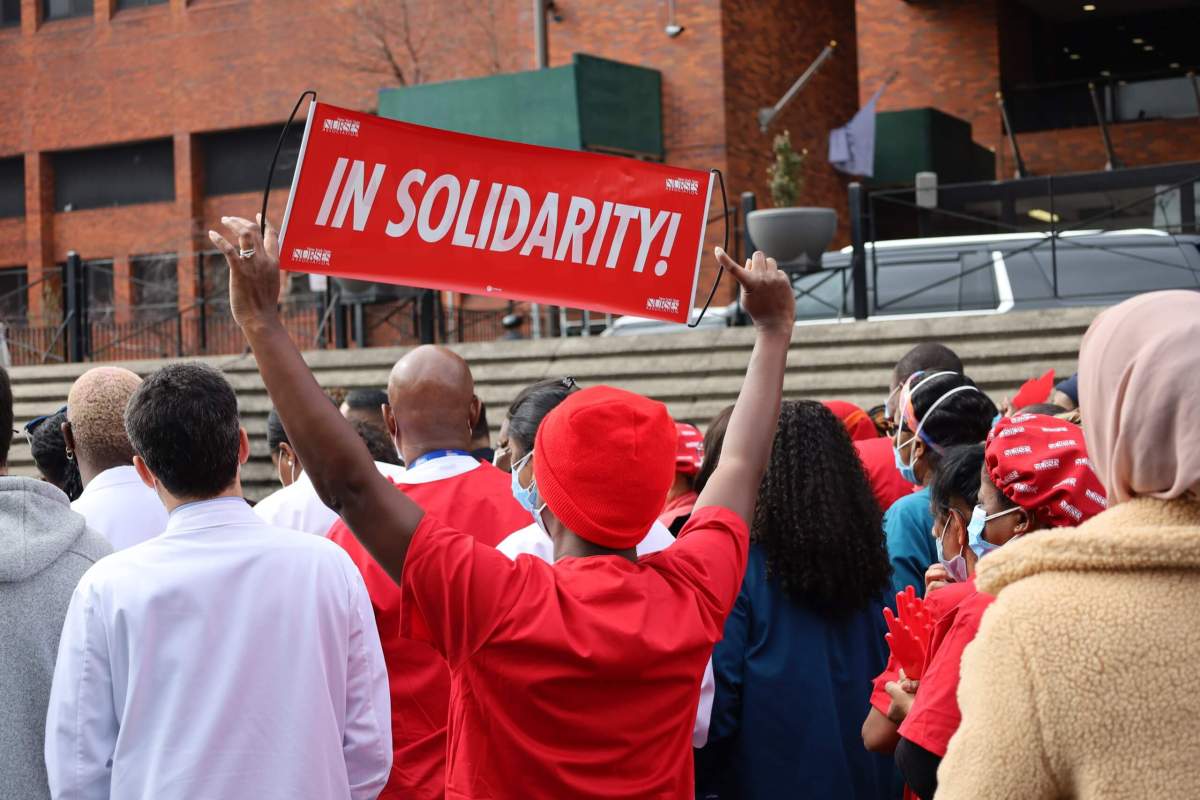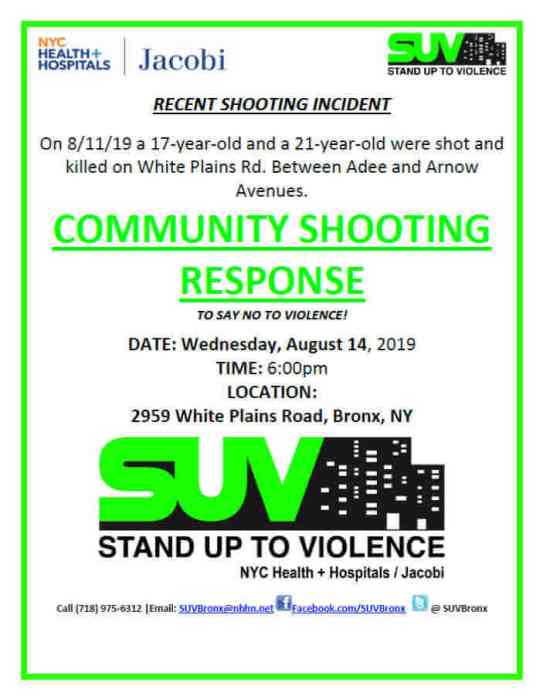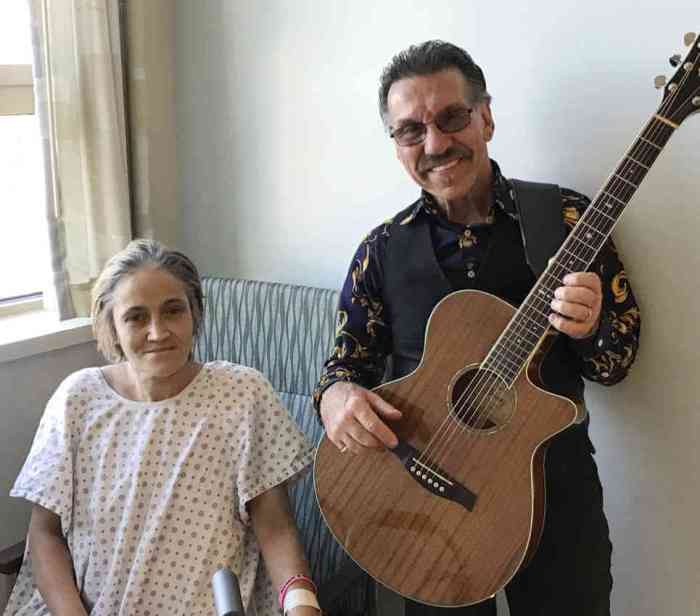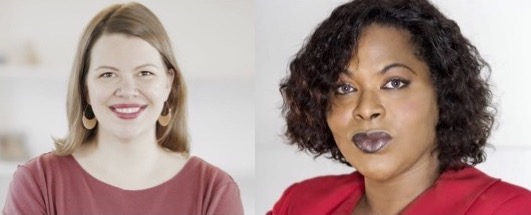In recent months, the Bronx and its hospital campuses have become a rallying ground for city nurses looking to improve their working conditions.
And it makes sense given the borough’s rich history of nursing dating back to 1898, when the Lincoln School for Nurses, an all-girls school in the Bronx, gave Black and immigrant women from the Caribbean and Africa a pathway to the health care profession.
More than 1,800 women graduated from that Lincoln before it closed in 1961, and the Bronx workforce has been heavily represented in the city’s health care industry with as many as 65,000 boroughwide health care workers pre-pandemic.
But modern day nursing in NYC has been rife with labor issues — exacerbated by COVID-19 — revolving around evergreen calls for better staffing and livable wages.
In early January, a three-day strike by private sector nurses at Montefiore led to a substantial wage increase of 19% and increased staffing levels. Two months later, in front Lincoln Hospital in the South Bronx, public sector nurses echoed familiar rallying cries, hoping to address a near-$19,000 pay disparity between them and their private nurse peers.
Lincoln Hospital, as well as Jacobi Medical Center, are two of 11-city run hospitals facing expiring union contracts Thursday, with more than 9,000 Health + Hospital and mayoral nurses — who provide direct care to the city’s first responders — across the city being represented by the New York State Nurses Association (NYSNA).
When Musu King, a seven-year nurse at Lincoln Hospital and NYSNA’s local bargaining unit president, isn’t caring for patients, she’s caring for her three daughters, one of whom has a disability.
While other NYC Health + Hospitals nurses said that they pick up extra shifts at private hospitals for more money, King said that’s not a possibility, but she’s also recently struggled to pay $150 co-pays for her daughter’s emergency room visits.
“Other nurses pick up extra agency shifts at private-sector hospitals to make ends meet. That’s not an option for me, because I need to care for my daughter, who is now four and living with a disability,” she said.
Before NYC’s private sector nurses scored a major labor victory in January, the pay gap between private nurses and the city’s public sector nurses was around $14,000.
That gap has now widened to around $19,000, NYSNA officials say.
Officials from NYC Health + Hospitals told the Bronx Times that like other city contracts, the existing one remains in place while a new one is negotiated, and assured no disruption in health care services — unlike the hurdles encountered when private nurses went on strike in January.
“NYC Health + Hospitals is grateful for the hard work, dedication, and sacrifice our highly-skilled nurses make every day. We look forward to negotiating a new contract with NYSNA and welcome new opportunities to strengthen our partnership with NYSNA and the nurses who are so essential to our mission and our System’s success,” said a spokesperson from NYC Health + Hospitals.
But Bronx public sector nurses say that the Health + Hospitals system is already compromised with too little nurses for too many patients. King’s short-staffed emergency department at Lincoln — one of two Level 1 trauma centers in the borough along with Jacobi — has dealt with an influx of migrants, adding to an onerous workload that includes critically ill residents.
On a “good day,” King said her department will have at-most three nurses for each zone in the emergency ward, but most days it’s usually one or two nurses.
“My number one concern is safety for the patients and even for us. When patients get frustrated with long wait times, they take it out on us. We are trying to take care of everyone at the same time, and that’s impossible,” King said. “No one is going to be satisfied.”
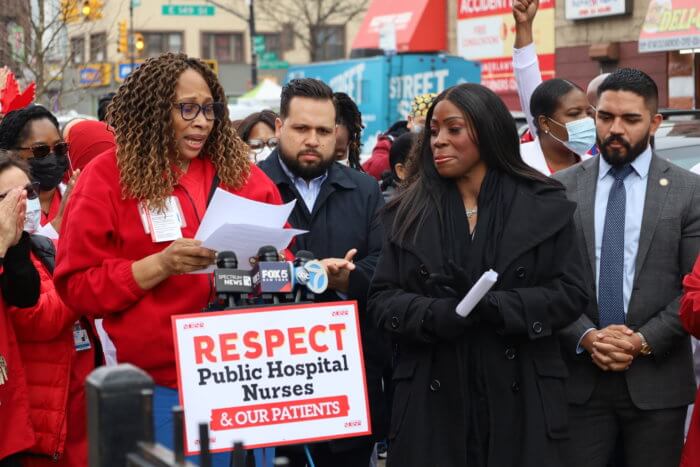
NYSNA officials also said at the heart of Thursday’s rally is a health and racial equity issue, as public sector hospital workforce and service populations are predominantly Black and brown and immigrants. One Jacobi nurse told the Bronx Times she feels the borough is ideal for nursing rallies, because safe staffing could help the Bronx overcome its poor health outcomes.
“So many of our experienced nurses are exhausted, burned out, and giving up. They retired or left H+H and the mayoral (nurses) for better pay and working conditions,” said Sonia Lawrence, a Lincoln Hospital nurse of 28 years.
Lawrence, who is also president of NYC’s Health + Hospitals executive council, says the pay disparity isn’t just at the entry level, adding that a public sector nurse in the city with 30 years of experience now makes approximately 25% less on average than a private sector nurse.
“That is a lot of incentive to leave the public sector (which) desperately needs to hold onto its experienced nurses,” she said.
One unique wrinkle in nurse negotiations is a 1990s agreement under the Giuliani administration in which public hospital nurses waived a clause that would bring salaries within $1,000 of the average entry-level private hospital staff nurse, THE CITY reported. And union leaders have been looking to invoke the agreement in recent contract talks.
Thursday’s rally at Lincoln Hospital was the first of many demonstrations that took place, as nurses gathered for candlelight vigils memorializing health care workers affected by COVID-19 in various areas of the city, including the Bronx’s Jacobi campus in Morris Park.

